Japan has declared the leak of hundreds of tons
of radioactive water at the Fukushima nuclear plant
a level 3 "serious incident".

Tokyo Electric Power Co.
says about 300 tons (300,000 liters, 80,000 gallons) of
contaminated water leaked from one of the tanks,
possibly through a seam. The leak is the fifth, and
the worst, since last year involving tanks of the
same design at the wrecked Fukushima Dai-ichi plant,
raising concerns that contaminated water could begin
leaking from storage tanks one after another.
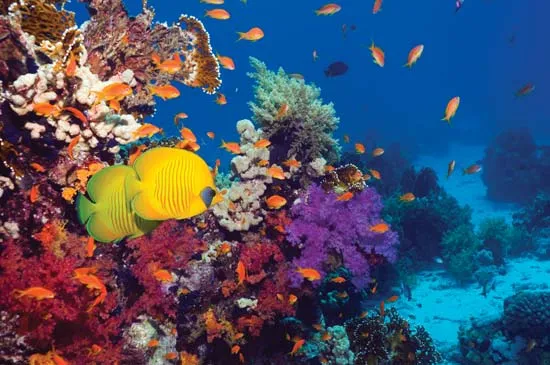
TEPCO said the leaked water is believed to have mostly
seeped into the ground after escaping from the barrier
around the tank. It initially said the leak did not pose
an immediate threat to the sea because of its distance — about
500 meters (1,650 feet) — from the coastline.
But TEPCO reversed that view late Wednesday
and acknowledged a possible leak to the sea after detecting
high radioactivity inside a gutter extending to the
ocean.
The company also said the tank may have been leaking
slowly for weeks through a possible flaw in its bottom.
That could create extensive soil contamination and a
blow to plans to release untainted underground water
into the sea as part of efforts to reduce the amount
of radioactive water.
The leaks have shaken confidence in the reliability
of hundreds of tanks that are crucial for storing water
that has been pumped into the broken reactors to keep
melted radioactive fuel cool.
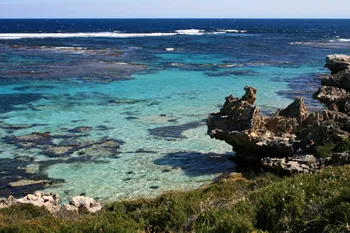
The plant suffered multiple meltdowns following a massive
earthquake and tsunami in March 2011 — a level
7 "major accident" and the worst since Chernobyl
in 1986.
"The growing contaminated water has been one of
our biggest concerns since the March 11 accident," said
Zengo Aizawa, TEPCO's executive vice president. "The
contaminated water remains a problem that could lead
to a crisis."
"Maybe you have heard about sick seals, polar
bears, tainted fish, mutations in dandelions and
fruits
and vegetables, possibly even animals already, and
seaweed. In fact the kelp from Corona del Mar contained
40,000,000 bcq/kg of radioactive iodine, as reported
in Scientific American several weeks ago. If you
don’t know your becquerels, its a lot. That’s
what your pacific fish feed on. And that was only
ONE isotope reported. There were up to 1600 different
isotopes that have been floating around in our
air, pouring out of the reactors, and steaming
out of
the ground, every second of every day, for 13 months.
Have you seen this in our mainstream media?" |
The leaked
water's radiation level, measured about 50 centimeters
(2 feet) above the puddle, was about 100
millisieverts per hour — the maximum cumulative
exposure allowed for plant workers over five years, Ono
said.
Contaminated water that TEPCO has been unable to contain
continues to enter the Pacific Ocean at a rate of hundreds
of tons per day. Much of that is ground water that has
mixed with untreated radioactive water at the plant Source
A nuclear expert has claimed
that the current water leaks at the crippled Fukushima
nuclear plant are much worse than the Tokyo Electric
Power Company (Tepco) authorities have stated,
as they lacked accuracy in measuring radiation levels.
The BBC quoted Mycle Schneider as claiming that around
400 tonnes of extra contaminated water was being released
into the ocean everyday as 1,000 storage tanks had a
capacity of holding only 85 percent of the toxic water
used as a coolant for the reactors.
Schneider, who has consulted various organisations and
countries on nuclear issues, also revealed that the water
was not just leaking from the tanks, but also the basement
and the cracks everywhere at the site.
The Japanese nuclear energy watchdog has, meanwhile,
raised the incident level from scale one to three on
the international scale that measures the severity of
atomic accidents, the report added. A former Japanese
ambassador to Switzerland has urged the withdrawal of
Tokyo's Olympic bid amid safety concerns.
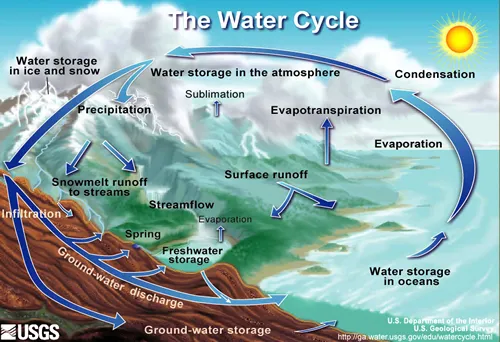
Mitsuhei Murata wrote a letter to the UN secretary general
saying that the official radiation figures published
by Tepco could not be trusted.Source
How
far does radiation travel?
Travel distance depends on
the type of radiation, as does the ability
to penetrate other materials. Alpha and beta
particles do not travel far at all, and they
are easily blocked. By contrast, gamma rays,
x-rays, and neutrons travel a significant distance
and are much more difficult to block (particularly
for large radioactive sources). For
additional information |
Radiation
found as far away as
Back in,BOSTON, Mar 27,
2011 (Reuters) - Trace amounts of
radioactive iodine linked to Japan's crippled nuclear
power station have turned up in rainwater samples
as far away as Massachusetts during the past week,
state officials said on Sunday.
Japan's Ministry of Health,
4/8/2013 - New data released by Japan's
Ministry of Health, Labor and Welfare (MHLW) shows
once again that the Fukushima Daiichi nuclear disaster
is far from over. Despite a complete media blackout
on the current situation, levels of Cesium-137 (Cs-137)
and Cesium-134 (Cs-134) found in produce and rice
crackers...

Months on from the Fukushima nuclear
accident, radioactivity has been found in one of the
Pacific Oceans most iconic Fish – the Blue Fin
Tuna. Scientists from the Universities of Stanford and
Stony Brokk say the fish would have picked up the radioactive
substance (-134 cesium and -137 cesuim) while swimming
in Japanese waters. These scientists say that the contaminants
sink slowly thus allowing for the fish to swim through
them and pick up the pollutants.
Obviously the large volumes of contaminated water that
escaped from the reactors into the sea have had something
to do with the fifteen (15) samples of fish caught from
as far away as the Californian Coast (U.S.A).
South Korea has 23 reactors
which are meant to meet more than 30 percent
of electricity needs. But the sector is currently
undergoing a crisis of confidence following a
series of shutdowns and a scandal involving parts
provided with fake safety certificates Wednesday's
incident brings to seven the total number of
reactors currently offline. State prosecutors
have launched an extensive probe into the safety
certificate fraud, which forced the shutdown
of two reactors in May and delayed the scheduled
start of operations at two more. Last year, officials
said eight suppliers were found to have faked
warranties covering thousands of items used in
a number of reactors. The scandal further undermined
public confidence already shaken by the 2011
Fukushima nuclear disaster in Japan and
its ongoing repercussions. |
RADIOACTIVE
29th March 2011 fallout from the
stricken Fukushima nuclear plant in Japan has been
found in the UK. Two British laboratories picked
up traces of radioactive iodine today & #151;
nearly 6,000 MILES from the damaged plant, which
has been
Customs officials in
Chile say some 20 cars being imported
from Japan were found with low levels of radioactivity.
Dutch authorities have
found traces of radiation on 19 containers
originating from Japan, two months after an earthquake
and tsunami there caused leaks from the Fukushima
Dai-Ichi nuclear plant.
The thing that interests
me is this: distance between Japan and California
is 8 632.45 km, whereas the distance between
Papua New Guinea and Japan is almost half that
distance at 4 770.62 km! Does this impact the
fresh fish that we are eating in Papua New Guinea
in any way? |
Consolo says, “If this pool collapses, as Senator
Wyden is now saying too, we would face a mass extinction
event from the release of radiation in those rods. This
may be the most important thing you ever pay attention
to for the sake of your family, friends, your neighbors,
every one you know and meet, all of humanity.”
“Preliminary reports of soil contamination are
starting to come in from the USGS, who has seemed reluctant
to share this information. Los Angeles, California, Portland,
Oregon and Boulder, Colorado so far have the highest
radioactive particle contamination out of the entire
U.S. Iodine, cesium, strontium, plutonium, uranium, and
a host of other fission products have been coming directly
from Japan to the west coast for thirteen months. Reports
in the past week indicate the pollen in southern California
is radioactive now too, and it is flying around, and
if you live there and go outside, you are breathing it
in. And so are your children,” continued Consolo.
Christina Consolo’s essay “Fukushima is Falling
Apart”:
What does this
mean
The mixed oxide fuel (MOX) reactor[2], which burns with
plutonium/uranium, is more deadly than those burning
on uranium-enriched fuel, according to nuclear experts.
The half-life of plutonium-239 in MOX is 24,000 years
and just a few milligrams of P-239 escaping in a smoke
plume will contaminate soil for tens of thousands of
years. A single milligram (mg) of MOX is as deadly as
2,000,000 mg of normal enriched uranium meaning that
one mg of MOX is basically two million times more powerful
than one mg of uranium. If even a small amount of this
potent substance escapes from the plant in a smoke plume,
the particles will travel with the wind and contaminate
soil for tens of thousands of years.
"These radioactive elements,
you can't see them and you can't smell them.
They're silent.
When you get them inside your body, you don't
suddenly drop dead from cancer. It takes five
to 60 years
to get your cancer. When you feel the cancer
in your breast, it doesn't say that it was made
by
some strontium-90 that you ate in a piece of
fish 20 years ago." Dr. Helen Caldicott |
Ray Guilmette of the National Council on
Radiation Protection and Measurements said that plutonium “is
thousands of times more radioactive than uranium,” if
absorbed into the body.
Donald Olander, professor emeritus of nuclear engineering
at the University of California, Berkeley, said that
because plutonium decays quickly, it produces radiation
that can kill cells in the body more quickly. But the
plutonium itself would pose a severe threat only if it
was involved in a violent reaction that turned it into
dust particles that could be inhaled. No one knows the
exact number but plenty of the fuel rods at risk are
MOX, thus containing deadly plutonium. If that blows
up then we might end up wishing we had had a nuclear
war instead.
Children
Kids are 10-20 times more radio sensitive than adults,
Women are more radio sensitive than men, girls are twice
as radio sensitive as boys, fetuses are thousands of
times more radio sensitive than adults: Children are
especially vulnerable to developing cancers from radiation
because unlike adults, their cells are dividing at a
very fast rate. During the process of cell division,
genes and chromosones are synthesised and split into
new cells. It is during this process of synthesis that
children’s cells are vulnerable to damage from
ionising radiation. When children are exposed to radioactive
iodine, their thyroid glands “soak it up like a
sponge.” Nuclear power stations produce 200 man-made
radioactive elements, all of which cause cancer and genetic
diseases, radioactive iodine is just one example. Dr
Helen Caldicott explains the implications of radiation
exposure in children in this video talk, hosted by the
Washington Physicians for Social Responsibility. It is
unknown how many children have been exposed to radioactive
iodine, especially in the first days after the disaster
began, when the atmospheric radiation levels were exceptionally
high. A primary school child reporting for the webcast
special: What Will Our Future Be?:
Cancer rates
•
In the early 1900s, one in 20 people developed cancer
• In the 1940s, one in 16 people developed cancer
• In the 1970s, it was one in 10
• Today, it’s one in three! According to the CDC, about 1,660,290
(1.66 million) new cancer cases are expected to be diagnosed in 2013
What is the worst radiation
can do to you? Radiation can kill
you (if you are exposed to enough of it) by doing
so much damage to your bodily systems that your body
can no longer function. The regulatory system for
radioactive materials is designed to prevent the
possibility that anyone could receive an exposure
even close to the levels that might inflict short-term
damage.
Initial signs and symptoms The initial signs and symptoms
of treatable radiation sickness are usually nausea and
vomiting. The amount of time between exposure and when
these symptoms develop is an indicator of how much radiation
a person has absorbed. After the first round of signs
and symptoms, a person with radiation sickness may have
a brief period with no apparent illness, followed by
the onset of new, more serious symptoms. In general,
the greater your radiation exposure, the more rapid and
more severe your symptoms will be. More
Are there pills to take to protect someone
from radiation? Potassium
iodide (KI)
protects people from thyroid cancer caused by
radioactive iodine, a type of radioactive material
that can
be released in nuclear explosions. KI should
only be taken in a radiation emergency that involves
the release of radioactive iodine. Since the
use
or release of radioactive iodine from a “dirty
bomb” is highly unlikely, KI pills would
not be useful. source
Buy Potassium iodide |
What do
you think 400 tonnes of extra contaminated water
being released into the ocean everyday will do to our food?
.Plutonium
is highly carcinogenic if breathed in or ingested.
How can I
tell if something is radioactive?
You can't, without the help of a radiation detector.
In addition, it is important to know what type of detector
you have and the type of radiation — alpha, beta,
gamma, x-ray, and/or neutron — that it can detect.
Scanning an object with a typical gamma/x-ray radiation
detector will not detect alpha particles, for example.
For additional information, see Detecting Radiation.
Since March 2011, TEPCO has
been using sea water in a desperate effort to
cool the reactors, causing further damage from
corrosion and drastically increasing radioactive
releases because the waste water is being dumped
into the Pacific Ocean. See this radioactive
sea water impact map which models the releases
of waste water from March 2011 to March 2012;
and the still image from February 2012, below.
Many tonnes of highly radioactive isotopes are
contaminating marine life, from the northern
to southern hemispheres. Dilution does not negate
risk, because the most highly radioactive isotopes
have a half life of thousands of years and can
be fatal in tiny quantities. For example, one
millionth of one gram of plutonium is carcinogenic
when ingested or inhaled, and plutonium’s
half life is 24 000 years. Cesium 137 has a half
life of 30 years, which means it is radioactive
for 600 years. Radiation also bio magnifies by
a factor of 10 – 20 as it moves up the
food chain. This means that radioactive
contamination of algae from radioactive waste
water or fallout becomes more potent in the process
of being eaten by crustaceans, small fish, bigger
fish and then humans. Radioactive waste dumping
has been continuous since March, 2011, resulting
in significant contamination of the Pacific Ocean.
The waste water also creates radioactive steam
and gas when pumped inside the reactors, which
is escaping into the atmosphere. Source |
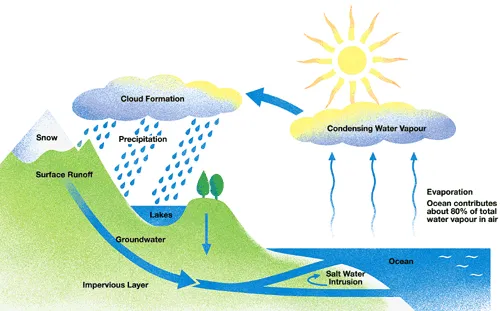
"Radiation is unsafe at any dose:
Dr. Helen Caldicott clarifies the issue of radiation
and safety in this NY Times OP-ED piece: “…physicists
talk convincingly about “permissible doses” of
radiation. They consistently ignore internal emitters — radioactive
elements from nuclear power plants or weapons tests that
are ingested or inhaled into the body, giving very high
doses to small volumes of cells. They focus instead on
generally less harmful external radiation from sources
outside the body, whether from isotopes emitted from
nuclear power plants, medical X-rays, cosmic radiation
or background radiation that is naturally present in
our environment.
However, doctors know that there is no such thing as
a safe dose of radiation, and that radiation is cumulative.
The mutations caused in cells by this radiation are generally
deleterious. We all carry several hundred genes for disease:
cystic fibrosis, diabetes, phenylketonuria, muscular
dystrophy. There are now more than 2,600 genetic diseases
on record, any one of which may be caused by a radiation-induced
mutation, and many of which we’re bound to see
more of, because we are artificially increasing background
levels of radiation.”
Radiation bio-concentrates as it moves up the food chain:
When radioactive fallout descends from the atmosphere
and settles in environment, it contaminates the land,
air and water for hundreds or many thousands of years,
depending on the life span of the radioactive element.
Radioactivity also bio-magnifies as it moves up the food
chain, and is internally emitted in humans and animals
when ingested (in food and liquids) or inhaled into the
lungs. Dr Helen Caldicott explains radiation in the food
chain in this talk, hosted by the Washington Physicians
for Social Responsibility."
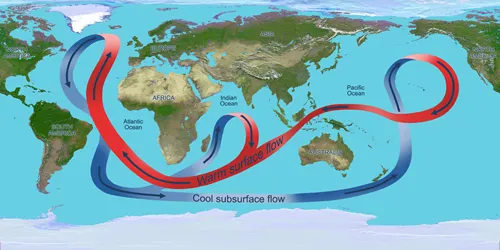
YOUR FOOD
Radiation from Japan rained on Berkeley during
recent storms at levels that exceeded drinking water
standards by 181 times and has been detected in
multiple milk samples,
Business as usual – no
independent radiation testing for Japanese imports
arriving in Australia,
the U.S and E.U: Arnie Gundersen stated in an
interview that Hillary
Clinton signed an agreement with her Japanese
counterpart, to import radioactive food and manufactured
products from Japan without testing. Official
policy in Europe confirms the E.U has followed
suit, and
Australia will not be testing Japanese imports
either. The broad policies of the U.S, EU & Australia
is exactly the same: to continue normal trading
without independent testing, and accept the Japanese
govt’s radiation screening results, which
have been shown to be very unreliable Source
Radioactive goods are being circulated globally
without the public’s knowledge: Our governments’ decision
to continue trade as usual with Japan without
thorough radiation testing means they are intentionally
allowing radioactive products to be circulated
globally without the public’s knowledge.
Japan’s exports range from fresh and
processed food to manufactured goods, like
electrical appliances, cars and car parts.
It is significant to note that the Nissan factory
is located in Fukushima prefecture, and that
Gundersen’s tests of Japanese car filters
from Fukushima, and Tokyo – which is
over 200 km from the Daichi plant – put
them both in the category of nuclear waste. Source
All the food species in Japan have been
contaminated with radiation: We live in an
era of globalised food supplies and all the
biggest companies, like Kellogs, Nestle, Kraft,
Pepsico and Coca-Cola, source Japanese ingredients
for their products, but they are not disclosing
radioactive ingredients, due to ‘propriety.’ A
relatively few large multinational companies
own most brands of processed food and drink
products commonly available in supermarkets
worldwide. Source
Australia only does random spot checks for
radiation – there is no thorough screening
system for radioactive goods: Australia’s
policy regarding radiation in imported food
is to conduct random spot checks which the
computer selects, and when radioactivity is
found, contaminated items are mixed in with
non radioactive products. Remember that dilution
as a solution to pollution is fallacious when
it comes to radiation.
All the food species in Japan have been
contaminated with radiation: We live in an
era of globalised food supplies and all the
biggest companies, like Kellogs, Nestle, Kraft,
Pepsico and Coca-Cola, source Japanese ingredients
for their products, but they are not disclosing
radioactive ingredients, due to ‘propriety.’ A
relatively few large multinational companies
own most brands of processed food and drink
products commonly available in supermarkets
worldwide. To see exaclty who owns what, check
out this pictorial diagram.
China’s radiation testing stop contaminated
shipments at the border: In contrast to western
countries, China is testing Japanese imports
thoroughly, and taking action to stop radioactive
shipments crossing their borders. In May 2012,
Ningbo Customs prevented 1127 tons of radioactive
scrap metal from entering China. “The
scraps were imported by a Ningbo-based company
and shipped from Chiba Port. Testing result
showed that their Cesium-137 content was more
than three times above China’s national
safety limit.” Source |
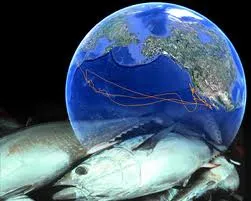
WASHINGTON May 28, 2012 (Reuters) - Low
levels of nuclear radiation from the tsunami-damaged
Fukushima power plant have turned up in bluefin
tuna off the California coast, suggesting
that these fish carried radioactive compounds across
the Pacific Ocean faster than wind or water can.Small
amounts of cesium-137 and cesium-134 were detected in
15 tuna caught near San Diego in August 2011, about four
months after these chemicals were released into the water
off Japan's east coast, scientists reported on Monday.
"The jet stream, and a highly
dynamic portion of our atmosphere called the
troposphere, have been
swirling around massive amounts of radioactive
particles and settling them out, mostly in rain,
over the entire
northern hemisphere, especially the west coast
of North America, from Alaska down to Baja and
even
further. Iodine, cesium, strontium, plutonium,
uranium, and a host of other fission products
have been coming
directly from Japan to the west coast for thirteen
months." |
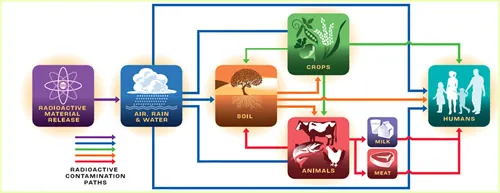
The University's
Department of Nuclear Engineering (UCB)
reported on 25 May that it had detected the highest
level of radioactive cesium 137 in nearly a month
in raw
milk samples taken from a dairy
in Sonoma County where the cows are
grass fed, and also reported elevated levels of cesium
134 and cesium 137 in pasteurized, homogenized milk
samples with a “best by” date of May
26 from a Bay Area organic dairy where the farmers
are encouraged to feed their cows local grass. Radiation
concentrates in milk because cows eat grass, and
grass and broad-leafed vegetables such as spinach
and kale are among the first crops to accumulate
radiation from nuclear fallout.

Reports in the past week indicate the pollen
in southern California is radioactive now too, and it
is flying around, and if you live there and go outside,
you are breathing it in. And so are your children. Along
with fission products blowing over from Japan. And radiation
in your drinking water. And in your rain. And in the
fish you are eating. And your vegetables. And the milk
supply. And its happening every second, of every day.
For 13 months. Are you starting to see a problem here?
How can I tell if something
is radioactive?
You can't, without the help of a radiation detector.
In addition, it is important to know what type of detector
you have and the type of radiation — alpha, beta,
gamma, x-ray, and/or neutron — that it can detect.
Scanning an object with a typical gamma/x-ray radiation
detector will not detect alpha particles, for example.
For additional information, see Detecting Radiation.
.Monitor Your
Enviroment
How can I tell if something
is radioactive?
You can't, without the help of a radiation detector.
In addition, it is important to know what type of detector
you have and the type of radiation — alpha, beta,
gamma, x-ray,
.
|

